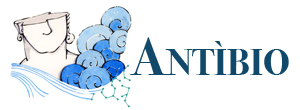The second Steering Committee Meeting was held after 4 months from the first Steering Committee (June 14th, 2022) together with the first Advisory Board, as foreseen in the project proposal, in the presence of all the partners (IMM-CNR, IPCB-CNR, NICPB) and the members of the Advisory Board: Prof. Yaron Paz (Technion, Israel) and Prof. Ian Nicholls (Linnaeus University, Sweden), while Gaetano Valastro (Director of the Catania Unit of Regional Agency for Environmental Protection, ARPA) was justified absent.
Giuliana Impellizzeri (IMM-CNR), Principal Investigator (PI) and WP1 (Management and Coordination) leader of the ANTÌBIO project, chaired the meeting.
After the welcome speech, she described the aims and perspectives of the ANTÌBIO project. After the welcome speech, she described the aims and perspectives of the ANTÌBIO project. In particular, she described the funding programme (panel “Capitale naturale e risorse per il futuro dell’Italia” nell’ambito delle “Linee Guida al Piano Triennale Attività CNR 2020-2022 – Progetti di Ricerca @CNR”), the meaning of the project’s logo, the motivations, the scientific strategy, the objectives, the team, the stakeholders and the work plan together with the work packages (WPs).
Maria Cantarella (IMM-CNR), coordinator of WP2 (Molecularly imprinted inorganic materials), at the beginning of her presentation illustrated the research activity of the CNR-IMM in the framework of this WP. In particular, she presented the potentiality of the combination of several factors: nanotechology, photocatalysis, molecular imprinting and magnetic powders, to achieve the goal of the ANTÌBIO project. Maria described in detail the adopted protocol to perform the photocatalytic tests, as requested by Anne Kahru during the previous project meeting.
Sabrina Carroccio (IPCB-CNR), coordinator of the IPCB team and WP3 (Molecularly imprinted organic materials) leader, presented an exhaustive overview of the WP. She illustrated the milestones and deliverables of WP3, also describing the management of the funds. Then she focused the attention on the task 3.1 regarding the synthesis of molecularly imprinted polymeric nanopowders. The advances of the research work are consistent with the timeline described within the Gantt chart of the project.
Anne Kahru (NICPB), coordinator of the Estonian team, presented an overview of the NICPB institute. She described the eco-toxicity tests using algae, daphnids, and bacteria Vibrio fischeri as sensitive models. These tests will be employed in the framework of the project so to ensure the eco-safety of the synthetized materials.
Gianni Pezzotti Escobar (IMM-CNR), coordinator of WP4 (Application trials), presented the first task of this WP consisting in the realization of a lab-scale demonstrator, capable to remove the selected antibiotics from water. He described the main features that will characterize this demonstrator, for an efficient water treatment using the selected best performing imprinted material. Gianni highlighted that the proposed devise will be realized in house, thanks to the technical expertise and facilities of IMM, including several 3D printers, in this way the overall cost will be reduced. In addition, he stated the importance to anticipate the purchases to reduce the typical delays of this period. At the end he briefly illustrated the second task of WP4 consisting in the validation of the demonstrator and relative deliverables.
Andrea Scamporrino (IPCB-CNR), responsible of WP 5 (Dissemination and Exploitation) presented the activities carried out so far. In addition, the various participations in scientific congresses by Giuliana Impellizzeri, Maria Cantarella and Roberta Puglisi, which took place since June, were then communicated. Andrea showed the social contents published so far, asking the other partners to share the various posts as much as possible, in order to maximize the dissemination of scientific contents with a high social impact, such as that relating to antibiotic resistance. The presentation was closed with the confirmation of the accomplishment of the tasks required by the project so far and with the news about the creation of gadgets branded with the project logo.
The last part of the meeting was deserved to further comments and suggestions of the Advisory Board’ members. They recognized the huge work already done and appreciated it. In addition, they asked to receive a copy of the whole project proposal.


